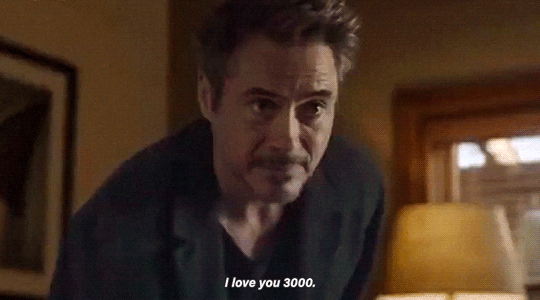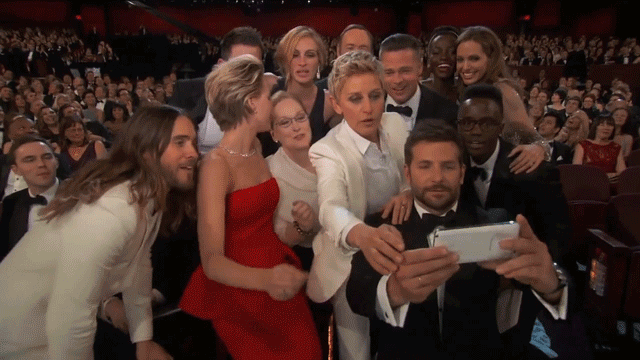In the early 2010s, we could not have guessed the phenomenon the internet would grow to become over the decade. However, from Instagram stories to maximum retweets, netizens have churned out some worthy content over the decade. While a few bypassed to become ‘viral’ on the web, others were best forgotten.
From viral challenges and parodies to eye-raising one-liners and oddball photographs, netizens have dished up and passed around a fair share of hilarity over the last decade. We have pieced together a list of the trends from 2010 through 2019, categorising them in the Bad, the Good, and the Ugly.
The Good
Baby Yoda

I do not really follow Star Wars neither watch the The Mandolirian. But I do, however, watch the internet. And if you have not been living under the rock all November this year, you might have also had a Twitter timeline filled with nothing but Baby Yoda memes.
The cute, little adorable fritter made his debut earlier this month in the new Disney+ new series, The Mandalorian. It is safe to say he was an immediate hit. He is green, squishy, has big wide set of eyes, tiny hands, floppy ears, and peach-fuzz hair growing over his wrinkly yet youthful skin. Despite several CGI disasters this year, such as Sonic The Hedgehog and the live-action Cats musical adaptation (that released in the US in December but is slated to release in India this Friday on 3 January, 2020), Baby Yoda somehow seems to have emerged unscathed. Formerly known as ‘The Child’, he is fast becoming the focal point of the new show with goggle search only surging upward since early November.
Internet's favourite man Keanu Reeves

This is not exactly about Keanu Reeves the actor, but more about Keanu Reeves as an idea. What began with a photograph of slumped Reeves sullenly eating a sandwich in June 2010, went on to become a pop culture icon, encapsulating his goofy, self-effacing demeanour and uber-chill attitude. As Sad Keanu photoshops spread sadness all across, the internet took it upon themselves to cheer up Keanu by declaring 15 June as 'Cheer Up Keanu Day'.
However, in 2019, the internet woke up to an altogether different Keanu, a wholesome hero with 'nice guy' stories credited to him all across the web. His off-screen persona charms so many people that on Twitter, for example, 250,000 follow the account Keanu Doing Things, while on Reddit, 300,000 people are devoted to celebrating his general awesomeness. There, you can find recent stories like Keanu helping a lost stranger find her way, Keanu secretly donating millions to charity, and Keanu being as humble now as he was nearly 30 years ago. What a guy!
Avengers: Endgame - I Love 3000

Disney and Marvel's tentpole Avengers: Endgame entered a historic territory after securing $2.7902 billion, and debunking James Cameron's long-standing Avatar at the global box office. However, apart from being the most anticipated film of the year, Avengers: Endgame felt like Marvel's cinematic love letter to the superhero universe with its iconic dialogue 'I Love You 3000.'
The line was of course first uttered by Tony Stark’s daughter Morgan during a touching domestic scene in Endgame, and later took on greater poignancy when Stark’s hologram said the line back to Morgan during his funeral (Stark having sacrificed himself to save the universe from Thanos). “I love you 3000” became a classic, with Marvel fans turning it into a meme commemorating the death of Iron Man, and honouring the end of the Infinity Saga in the Marvel Cinematic Universe.
Kattappa ne Baahubali ko kyu maara?

2015 saw the release of SS Rajamouli's magnum opus Baahubali: The Beginning – a film which went on to become the highest-grossing Indian film of all time back then. The two-part fantasy epic, that includes Baahubali: The Beginning and Baahubali 2: The Conclusion, tells the story of an ancient kingdom, and the fight between two warriors, Baahubali and Bhallala Deva, to claim its throne.
The first part ended on a shocking cliffhanger, with the protagonist, Mahendra Baahubali, getting back-stabbed (literally) by his closest ally, Kattappa. This iconic moment gave rise to the "Why Kattappa Killed Bahubali" meme, that has lasted for almost two years now, leading to the release of the sequel.
The meme almost served as a promotional campaign for the makers because the constant buzz about the question ensured there was enough curiosity among people when it came to awaiting the release of Baahubali 2: The Conclusion.
Ellen Degeneras' all-star Oscar selfie

The decade was a rather defining year when it introduced the phenomenon of 'selfies.' Ellen DeGeneres casually broke the internet when she got Bradley Cooper, Jared Leto, Jennifer Lawrence, Julia Roberts, Meryl Streep, Angelina Jolie, Brad Pitt, Channing Tatum, Lupita Nyong'o, Lupita's brother Peter Nyong'o, and yes, Kevin Spacey, to squeeze together for the Oscars Selfie, which eventually became the most-retweeted photo of all time. Twitter was temporarily disabled following DeGeneres’ tweeting of the photo, which was re-shared on the platform over 3.4 million times.
Honorable mention: Early this year, Jennifer Aniston made her Instagram debut with a selfie featuring the main cast of her popular '90s shows Friends. Posing alongside her former co-stars, Courteney Cox, Lisa Kudrow, Matt LeBlanc, Matthew Perry, and David Schwimmer, she gained a whopping 5.8 million followers in less than 24 hours. According to The Guardian, the platform even crashed for a while as fans thronged to visit her profile.
The Bad
Bollywood clicks a selfie with Narendra Modi

Now that we are talking about selfies, it would rather be unfair to mention about the most-talked selfie closer home. Earlier this year, Prime Minister Narendra Modi invited a few prominent Bollywood personalities to talk about the role of India cinema in shaping the nation. In a bid to recreate Ellen’s Oscar magic, actor Ranveer Singh clicked a beaming selfie with Modi and all the stars. While most Twitter users resorted to create memes out of it, others criticised the silence of the ‘selfie-featured’ celebs during the ongoing Citizenship Amendment protests.
Our business is our business, none of your business – Race 3

"Our business is our business... none of your business," is possibly one of the most cringiest film dialogues of the decade. Uttered by actress Daisy Shah in the Hindi film Race 3, it has inspired umpteen number of meme, when the trailer released and now, continues to be used in hilarious situations while dealing with real-life problems. While the film horribly tanked, the dialogue continues to echo throughout the internet.
Priya Prakash Varrier's wink

Priya Prakash Varrier turned into an overnight sensation when a teaser clip of ‘Manikya Malaraya Poovi’, from her Malayalam film Oru Adaar Love (2018), was shared on social media, sending the entire internet into a meltdown. The video saw Warrier as a schoolgirl, flirting with a fellow student, raising her eyebrows and winking at him. Twitter was smitten.
Varrier’s viral fame, meanwhile, inspired countless memes and parody videos. The best of the lot feature Varrier’s shots from the viral video intercut with shots of personalities such as Modi, Rahul Gandhi, and United States President Donald Trump.
Fashion blunders

Priyanka Chopra. Photo by AFP.
For her second appearance at the Cannes 2015 red carpet, India’s 'fashionista' Sonam Kapoor wore a yellow feathery Elie Saab gown, which was panned by the Twitter fashion police. From omelette to Bengal's favourite Kobiraji Cutlet, and from a feather duster to the big bird, Kapoor's gown drew the imaginative best out of Twitter.
Priyanka Chopra Jonas took things a notch higher in the 2017 Met Gala, where she wore a bold Ralph Lauren trench coat gown with an unbelievably long train. While the coat made quite a statement on Twitter, it also unleashed her followers' creative best, with users calling the dress as a triumph of the Swachh Bharat Abhiyaan.
Bollywood hobnobbing with Ed Sheeran, Kate Perry on their India tours
Remember Ed Sheeran’s inebriated photo from his 2015 'Divide' tour to India? If not, let me jog your memory. Two days prior to his performance on 19 November, 2015, the singer was seen grooving with the who’s who of Bollywood, including Shah Rukh Khan and Abhishek Bachchan at a party thrown by Farah Khan. While watching the pictures splashed all across social media, the introvert in me could only sympathise with Sheeran.
While Bollywood was clearly drunk on revelry and extremely eager to show their hospitality, the ever observant Twitterati could not help but notice a rather awkward expression on Sheeran’s face in those photos. It seemed like Sheeran hanging out with Bollywood’s elite was a morse coding us with dead eyes and plastic smiles, begging to be saved.
The Ugly
Hardik Panday on Koffee with Karan

Hardik Pandya and KL Rahul were asked to explain their comments by BCCI. Twitter @hardikpandya7
It was meant to be a fun, no-holds-barred interaction but cricketer Hardik Pandya, by his own admission, got "carried away." Appearing on Koffee with Karan season 6, hosted by filmmaker Karan Johar, with teammate KL Rahul, Pandya's apparent locker room talk on women and misogynistic comments took many by surprise. Panday’s brash talk and innuendos did not taper down even for a second throughout the episode. The duo could have easily presented a perfect example to the millions of young, impressionable boys of this country. However the episode was lost in the ‘boys will be boys’ plot.
Kangana Ranaut-Hrithik Roshan feud

Kangana Ranaut and Hrithik Roshan
Hrithik and Kangana have been making headlines ever since the actress alleged her Kites co- actor was her 'silly ex'. Following several rather uncomfortable denials and name-calling, the two have maintained an odd balance. Ranaut, who is touted as a straight-shooter, has openly spoken about Hrithik and his family, alleging they ill-treated her.
In an interview to Hindutsan Times, Hrithik calls the Queen actress a "bully", and states he had learnt how to ignore such people instead of giving them undue attention. Now, I am all for Bollywood gossip, but news channels putting out their spat as the main news story, having primetime debates is beyond ridiculous – even by my standards.
Brief timeline of the internet’s idiotic challenges

Courtesy: Reddit India
The Kiki challenge, also known as the In My Feelings challenge, involves jumping out of a moving car and dancing alongside it to Drake’s hit ‘In My Feelings’, while the car is on the move. However, jumping out of a moving car is only acceptable if you are an action movie star. Given most of the common folk are not professional stuntmen, the premise of challenge could only end up in disaster.
Mannequin challenge saw people imitating mannequins and freezing for the camera while music plays in the background. The entire viral video craze seemed weird because people were putting themselves in often uncomfortable poses just to become oddly positioned mannequins.
In December 2018, Netflix film Bird Box, starring Sandra Bullock, was a post-apocalyptic movie where a family has to go on a dangerous journey completely blindfolded to avoid getting killed by a dangerous monster that captures people through eyesight. What should have ended there became a wildly popular challenge at the beginning of the year: the BirdBox challenge. This challenge involved people posting videos of themselves doing everyday tasks while blindfolded, and as you can imagine, it did not go over well with parents — or Netflix, for that matter.
Whether it is flipping water bottles or pouring down ice bucket all over, the internet loves nothing more than indulging in social media challenges. July 2019 began with yet another viral challenge, named BottleCapChallenge, which requires a certain level of physical fitness (and finesse) to participate in.
Mallika Sherawat sings Happy Birthday to Modi
In the hilarious clip, loosely inspired by Marilyn Monroe's birthday song for then-US President John F Kennedy in 1962, Sherawat, who has a natural talent for attracting controversies, declared Modi as India's most "eligible bachelor." In 2013, a year before Modi came to power, Mallika shared a video singing 'Happy Birthday' to him, something that was not sweet or cute but rather seductive.
Dhinchak Pooja

While the decade was bombarded with remakes of '90s music, it will sorely be remembered for Indian YouTuber Pooja’s ‘catchy originals’ — ‘Selfie Maine Leli Aaj' and 'Swag Wali Topi.' She is so bad, and yet so good she single-handedly defined a new trend of cringe-pop. With so much trolling and hate around, it takes a huge chunk of confidence to put something out there without having any qualms about it.
Honourable mention: Other notable luminaries in the world of cringe-pop include Pakistan's Taher Shah — of the infamous ‘Eye To Eye’-fame — and Nepal's Bhim Niroula, who sang ‘Sunday Morning Love You.' A more recent addition to the hall of fame is Omprakash 'Rap King' Mishra with his hit song ‘Aunty Ki Ghanti’. In 2019, a woman from West Bengal broke the internet after her rendition of Lata Mangeshkar's classic song, 'Ek Pyar Ka Nagma' went viral on the internet. Identified as Ranu Mondal, she shot to fame, and also subsequently made her debut as a Bollywood playback singer under composer-director Himesh Reshammiya.
Hello 2020! We look forward to more madness on the internet.
All images from Twitter.
from Firstpost Bollywood Latest News https://ift.tt/2QeUYky









